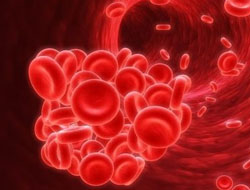
Erythrocytosis is a condition that affects red blood cells. People with this condition typically experience a shortage of red blood cells (anemia), yellowing of the eyes and skin (jaundice), and an enlarged spleen. Most newborns with hereditary spherocytosis have severe anemia, although it improves after the first year of life. Splenomegaly can occur anytime from early childhood to adulthood. About half of affected individuals develop hard deposits in the gallbladder called gallstones, which typically occur from late childhood to mid-adulthood.
There are four forms of erythrocytosis, which are distinguished by the severity of signs and symptoms. They are known as the mild form, the moderate form, the moderate/severe form, and the severe form. It is estimated that 20 to 30 percent of people with hereditary spherocytosis have the mild form, 60 to 70 percent have the moderate form, 10 percent have the moderate/severe form, and 3 to 5 percent have the severe form.
 Erythrocytosis is a condition that affects red blood cells. People with this condition typically experience a shortage of red blood cells (anemia), yellowing of the eyes and skin (jaundice), and an enlarged spleen. Most newborns with hereditary spherocytosis have severe anemia, although it improves after the first year of life. Splenomegaly can occur anytime from early childhood to adulthood. About half of affected individuals develop hard deposits in the gallbladder called gallstones, which typically occur from late childhood to mid-adulthood.
Erythrocytosis is a condition that affects red blood cells. People with this condition typically experience a shortage of red blood cells (anemia), yellowing of the eyes and skin (jaundice), and an enlarged spleen. Most newborns with hereditary spherocytosis have severe anemia, although it improves after the first year of life. Splenomegaly can occur anytime from early childhood to adulthood. About half of affected individuals develop hard deposits in the gallbladder called gallstones, which typically occur from late childhood to mid-adulthood.